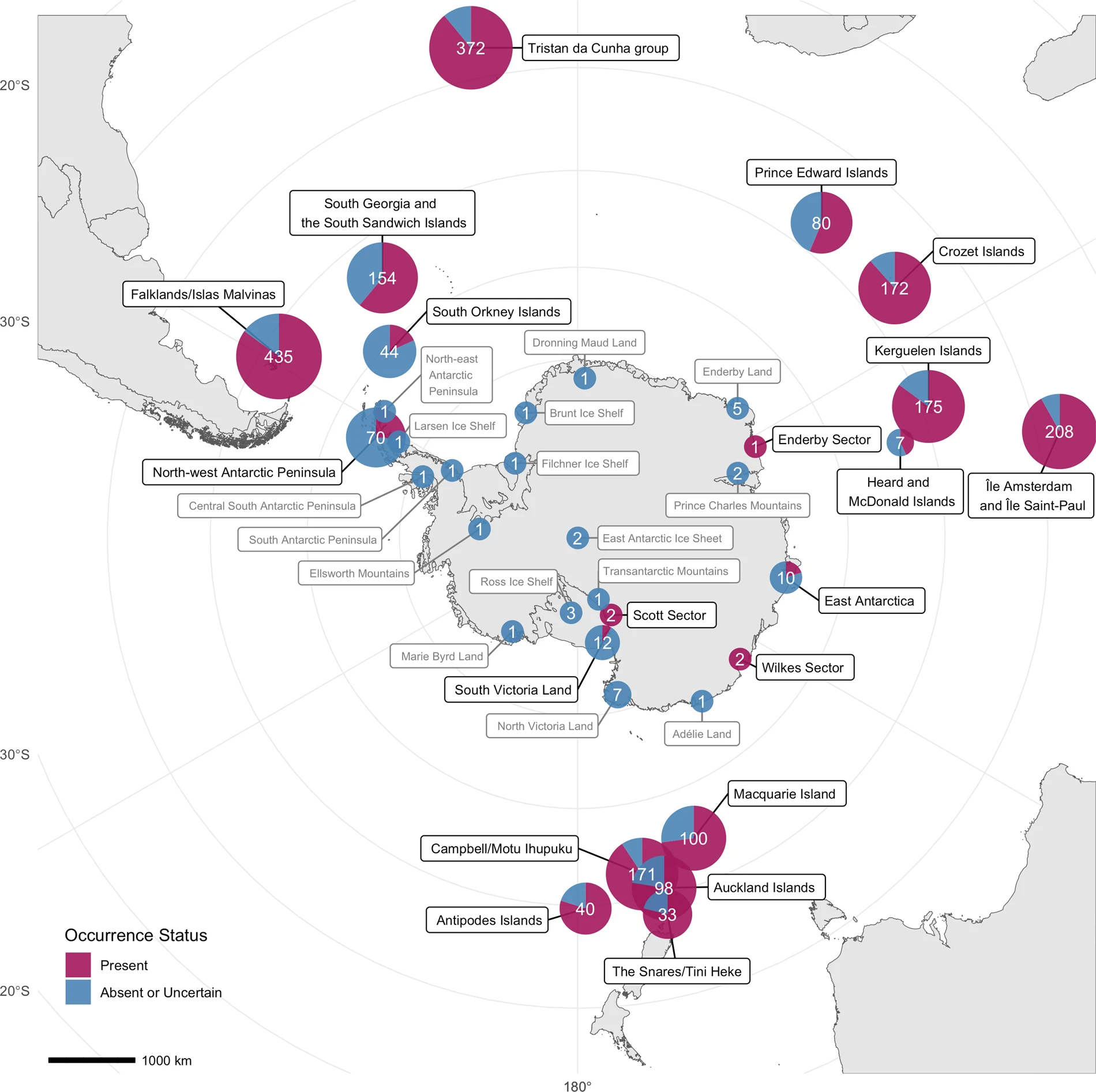 Fig. 1 from the paper: Spatial coverage of the data across the Antarctic. Number of alien species records across the Antarctic and Southern Ocean region. Values and point size indicate the total number of unique alien species or other taxon records per locality. Shaded points indicate the proportion of records currently listed as present (extant) at each locality (purple), versus the proportion of records with an uncertain or absent occurrence status in blue. Point sizes are log-scaled and constrained by a minimum size for localities with fewer than five records, for display. Localities without records with a present occurrence status in the dataset listed in grey text.
Fig. 1 from the paper: Spatial coverage of the data across the Antarctic. Number of alien species records across the Antarctic and Southern Ocean region. Values and point size indicate the total number of unique alien species or other taxon records per locality. Shaded points indicate the proportion of records currently listed as present (extant) at each locality (purple), versus the proportion of records with an uncertain or absent occurrence status in blue. Point sizes are log-scaled and constrained by a minimum size for localities with fewer than five records, for display. Localities without records with a present occurrence status in the dataset listed in grey text.
Rachel I. Leihy (Securing Antarctica’s Environmental Future, School of Biological Sciences, Monash University, Victoria, Australia) and colleagues have published open access in the journal scientific data on introduced and invasive species of Antarctica and the Southern Ocean Islands.
The paper’s abstract follows:
“Open data on biological invasions are particularly critical in regions that are co-governed and/or where multiple independent parties have responsibility for preventing and controlling invasive alien species. The Antarctic is one such region where, in spite of multiple examples of invasion policy and management success, open, centralised data are not yet available. This dataset provides current and comprehensive information available on the identity, localities, establishment, eradication status, dates of introduction, habitat, and evidence of impact of known introduced and invasive alien species for the terrestrial and freshwater Antarctic and Southern Ocean region. It includes 3066 records for 1204 taxa and 36 individual localities. The evidence indicates that close to half of these species are not having an invasive impact, and that ~ 13% of records are of species considered locally invasive. The data are provided using current biodiversity and invasive alien species data and terminology standards. They provide a baseline for updating and maintaining the foundational knowledge needed to halt the rapidly growing risk of biological invasion in the region.”
Reference:
Leihy, R.I., Peake, L., Clarke, D.A. et al. Introduced and invasive alien species of Antarctica and the Southern Ocean Islands. Sci Data 10, 200 (2023). https://doi.org/10.1038/s41597-023-02113-2
07 July 2023

 English
English  Français
Français  Español
Español